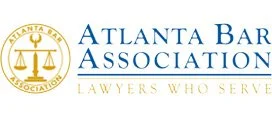Laws Every Motorcyclist in Georgia Should Know
Key Points:
- In Georgia, motorcyclists must follow the same traffic laws required of cars and truck drivers.
- In addition, motorcyclists must abide by additional equipment and safety gear rules.
- Motorcycle operators are required to hold a state-set minimum amount of liability insurance to cover bodily injury and property damage.
Table of Contents
Georgia Has a Set of Laws Specifically for Motorcycles
Just like cars and truck drivers must abide by the rule of the road, motorcyclists must do the same. However, because motorcycles come with additional risks and driving capabilities, Georgia has specific requirements and laws that all riders must follow.
Breaking a Motorcycle Law Can Have Consequences
In the State of Georgia, breaking motorcycle laws can have consequences. At a minimum, these drivers may be issued a ticket and required to pay fines, which typically reflect the severity of the offense.
Worse, breaking motorcycle regulations could result in serious accidents, causing injury or death to the motorcycle operator and others. If a rider is found to have broken the law, which resulted in a crash, then they could even face criminal prosecution. Therefore, knowing and following Georgia’s motorcycle laws are critical. The following are motorcycle-specific laws all riders should know:
Georgia Helmet Laws

Motorcyclists are largely unprotected from the consequences of an accident. For this reason, the state has helmet laws in place aimed at protecting riders. The State of Georgia requires motorcycle riders and passengers to wear approved protective headgear.
Passenger Laws
You may have a passenger ride with you on your motorcycle if there is a designated space for them. Double-occupancy motorcycles must either have an extra seat with footrests or a sidecar for passengers.
Passengers are also required to wear a helmet or headgear that complies with Georgia-established standards.
Minimum Insurance Requirements
The State of Georgia requires motorcyclists to carry a minimum of $50,000 liability insurance for bodily injury and death for two or more people. Additionally, riders must have a minimum of $25,000 in insurance coverage for property damage.
Motorcycle Light Laws
Most motorcycles operating on Georgia roads must have headlights, taillights, and turn signals. However, bikes manufactured before 1972 are excluded from the turn signal requirement.
Motorcycle license plates must also be illuminated, so they can be read from 50 feet to the rear. In Georgia, the use of flashing lights other than turn signals is prohibited. Blue, red, violet, and green colored lights are also illegal.
Driving Laws
In Georgia, each motorcycle has the right to use a full lane. However, the law permits two motorcycles to ride abreast and share a lane.
Lane splitting, the practice of riding between other vehicles driving in the same direction, is strictly forbidden.
License Requirements and Laws
Riders 17 years or older who have passed a motorcycle skills test may obtain the required Class M license or a Class M Instructional Permit. Riders who are at least 16 years of age may obtain a Motorcycle Instructional Permit.
A motorcycle is defined as a motor-driven vehicle that:
- Has a saddle for the rider to sit astride
- Is directionally controlled by handlebars
- Is designed to operate on not more than three wheels, which are in contact with the ground

 1201 West Peachtree Street #2339 Atlanta, GA 30309+1-770-212-3795$0-$100000
1201 West Peachtree Street #2339 Atlanta, GA 30309+1-770-212-3795$0-$100000I really enjoyed the experience I had with the Millar Law Firm. Everyone was very pleasant and knowledgeable about the work that is done. They communicated with me via phone and text messaging, when necessary. They kept me in the loop with every decision that was made, and made me feel of great importance while working with them. I would highly recommend them if your are in search of a law firm that will handle business with integrity and fidelity

Equipment Laws
In addition to the rules of the road that govern automobile traffic, motorcyclists are also required to follow certain equipment and safety gear laws.
For instance, all riders must wear helmets and shoes. If a motorcycle does not have a windshield, then eye protection is also required.
In addition, motorcycles must meet certain handlebar width and height requirements, and drivers must have their lights illuminated at all times.
These laws are meant to keep motorcycle riders as well as other drivers safe. Ignoring these requirements can result in serious injury to riders, passengers, and others on Georgia’s highways.















